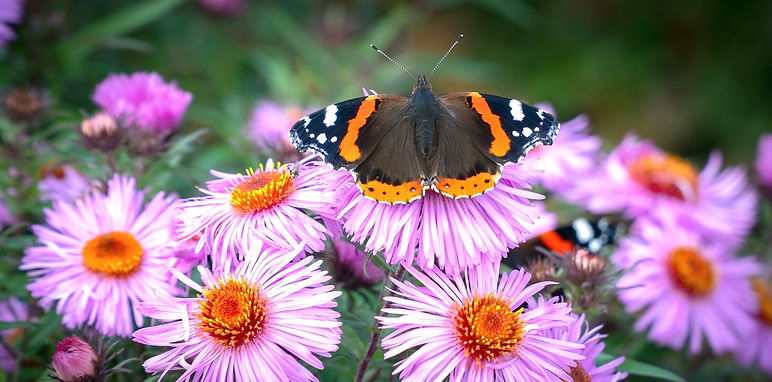Acerca de

Photo: Pixabay Royalty-free
WILD BEES, BUTTERFLIES & CO
Where have the insects gone?
The natural, but also the man-made and used biological diversity , the so-called agrobiodiversity, is declining . This development can be seen worldwide – but also in Austria.
The loss of ecosystems that are biologically worthy of protection due to settlement and road construction and conversion to intensively cultivated grassland and arable land is increasing year by year .
Soil sealing and intensive agriculture have long threatened insect habitats. Fields are heavily fertilized and mineral fertilizers and pesticides are often applied.
Wild bees, hoverflies and butterflies play a special role among the insects. Not only do they pollinate wild and cultivated plants, they are also part of the important diversity of species.
It's shortly before twelve - we have to actively campaign for insect-friendly land management. The preservation and promotion of native biodiversity are central future tasks for all of us .
Central factors for the decline in insect populations are:
the unrestrained surface sealing through settlement and road construction
the changes in the landscape structure due to the increase in intensively used agricultural monocultures
the use of mineral fertilizers, liquid manure and pesticides
the compaction of the soil by working the land with heavy agricultural machinery
the far too frequent mowing of forage areas and grassland (up to 6x a year)
the rapid decline of species-rich ecosystems such as flower meadows, fringes, hedges, meadow orchards and other field shrubs and the associated loss of habitats and food sources.
The most important measures to preserve pollinator insects are:
the creation of flower areas and flower strips as well as protection strips
the expansion of extensive grassland management
the restriction to ONE mowing per year after flowering and seeding of the meadow flowers
the care and maintenance of hedges, bends, rows of trees, copses and meadow orchards
and the conversion and retention of organic farming.
videos
Cartoon - Why insects are so important to us humans and what we can do
The first #briefly explained - why insects are so important for us humans and what we can do
SWR-Nature - Save the butterflies
literature
E.Blum nature film - diversity of butterflies
Heinrich Böll Foundation - Insects & Agriculture We need insects! ... and what we can do
The first #good to know and SRW state show
show what would happen if there were no more insects and the consequences for nature and humans
photos

Fig.: Insect Atlas 2020 Heinrich Böll Foundation
Photos: Pixabay Royalty-free
Our native insect species
There are around 30,000 native species of insects. Do you have to know them all? No, you can't know them all! However, some insects are so common that it is worth getting to know them.
www.Insekten-Box.de introduces moths, bees, beetles, flies, bugs and dragonflies
Podcast
Heinrich Böll Foundation - Podcast - Insects
70% of all animal species worldwide are insects
and yet they are currently under threat.
Why are insects dying out en masse and what does that have to do with our agriculture?
Quarks Podcast - Insects - How We Save Them
Where it used to buzz, crawl and flutter, there are far fewer insects to be found today.
But you can do something to stop insects from dying: in agriculture and in the forest, but also in your own garden.












